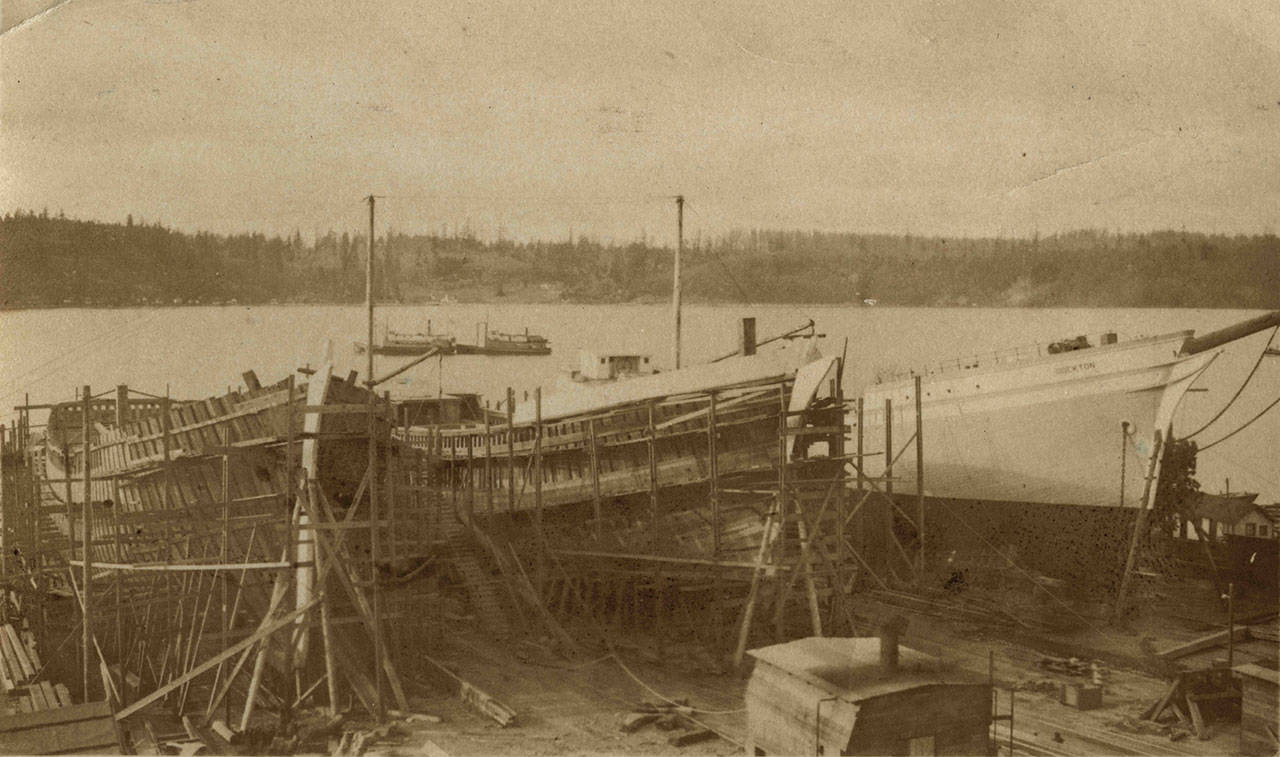By Bruce Haulman and Terry Donnelly
For the Beachcomber
Today, the Dockton waterfront south of Dockton Point is a quiet place with a line of low bulkheads and shoreline houses broken only by the historic Plancich Net Shed.
But more than a hundred years ago, World War I, which began in Europe in 1914, increased the demand for cargo ships to transport food and materials to the war-torn continent. Shipyards throughout the Pacific Northwest began to build large wooden cargo vessels because they could be built quickly, large timbers were readily available, and iron and steel were needed for munitions and warships.
As the Seattle and Tacoma shipyards mobilized for the war effort, opportunities also arose for small, independent operators like the Martinolich Shipyard in Dockton.
In 1917, Martinolich was contracted by the Norwegian government to build three large wooden topmast schooners that were 235-feet long and fore and aft rigged. To accommodate the construction of these large vessels, the Martinolich shipyard, along the west shore of Dockton, just south of Dockton Point and the Plancich Net Shed, was completely rebuilt to provide fully-planked ways capable of building all three ships simultaneously.
The 1918 photograph, from the collection of Teresa Anderson, shows the shipyard working at full effort with the Dockton on the right, almost completed; the Ella A next to her, ready for planking; and the Elinor H on the left, with her scantlings in place.
However, by the time the first of the ships, the Dockton, was launched in late 1918, the war was drawing to a close. The Norwegian government failed to make payments and canceled the contract. Martinolich was forced into bankruptcy but was saved when the Polson Lumber Company of Aberdeen, Washington, who supplied the lumber for the boats, decided to complete the two remaining vessels, and use them to ship the company’s lumber out of Grays Harbor.
The Ella A and the Elinor H were launched in 1920 and that stabilized Martinolich’s business so it was possible for him to continue building boats for the next decade. Martinolich became known as the “King of Purse Seiners” for the deep-hulled fishing boats he designed and built in the 1920s. The yard also continued to build other workboats, the occasional yacht, and some unusually powerful runabouts that were used as rumrunners during Prohibition.
Terry Donnelly’s photograph of the Plancich Net Shed shows the Dockton waterfront now. It is hard to imagine that in 1918, the three large hulls of the Martinolich schooners towered just behind the net shed, and that this tranquil waterfront was the scene of a massive shipbuilding effort to support the war effort during World War I.


